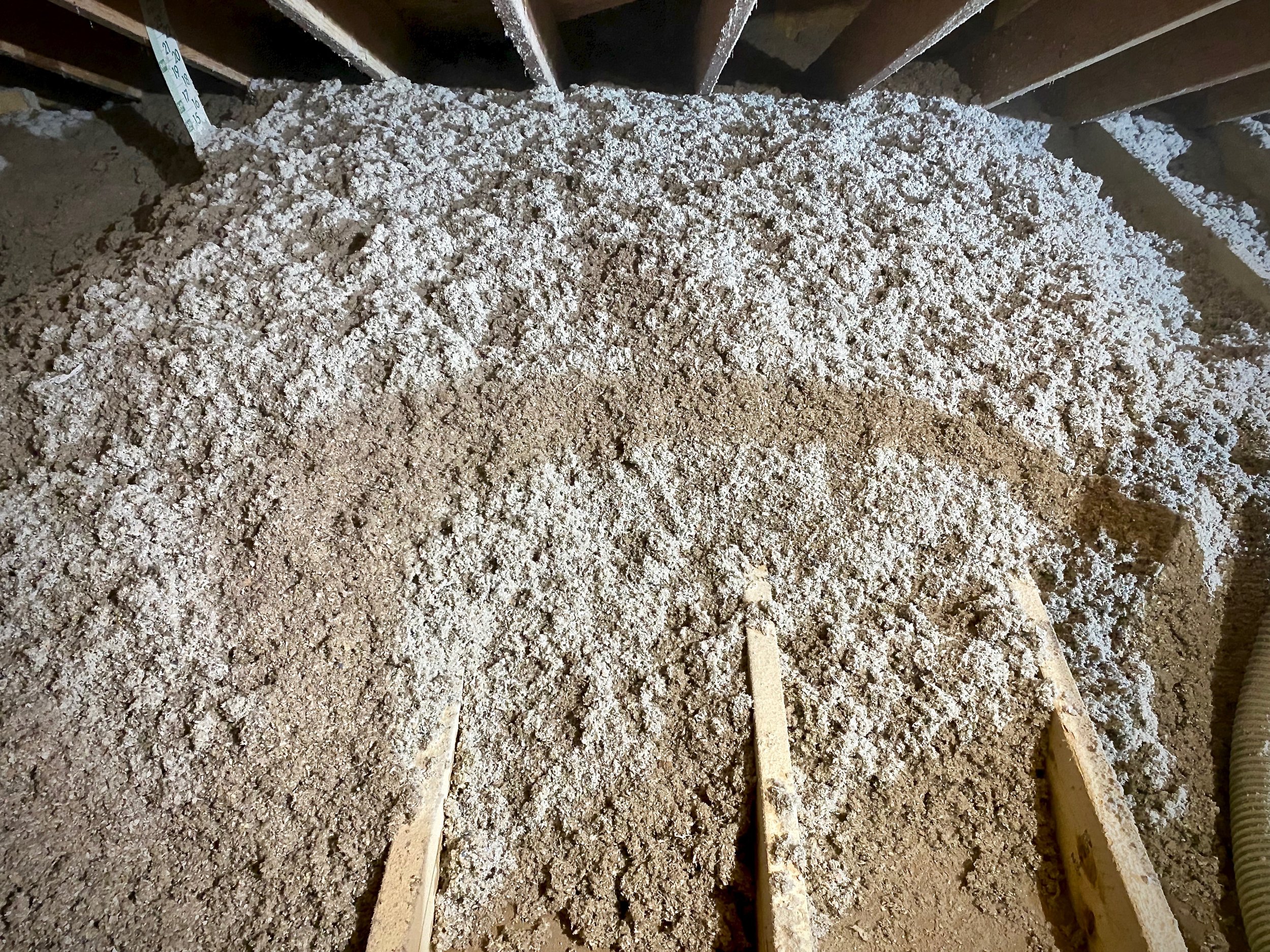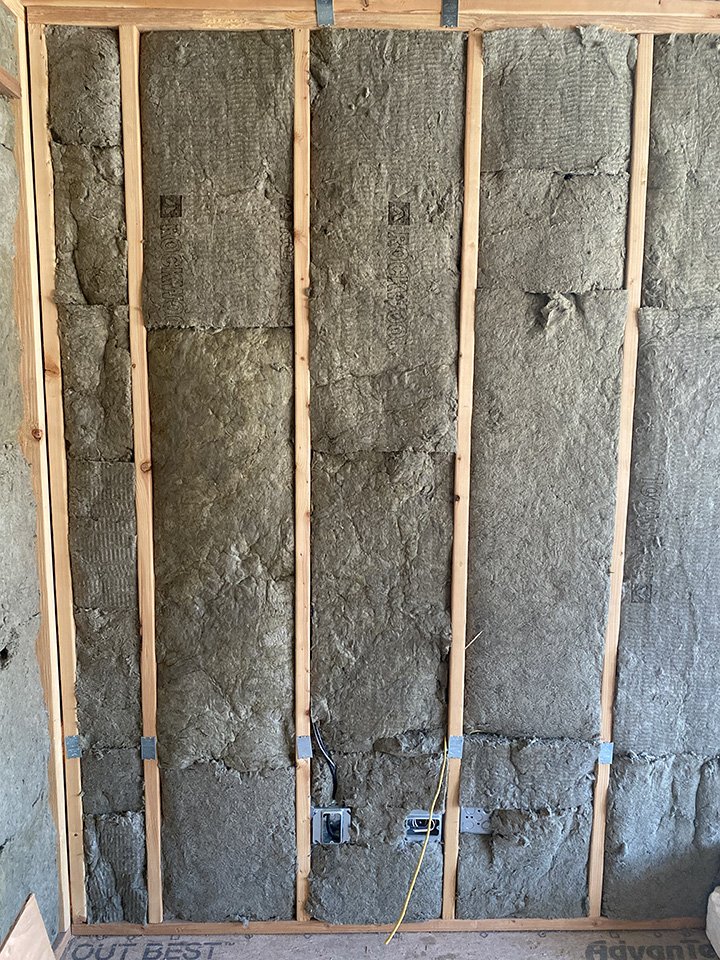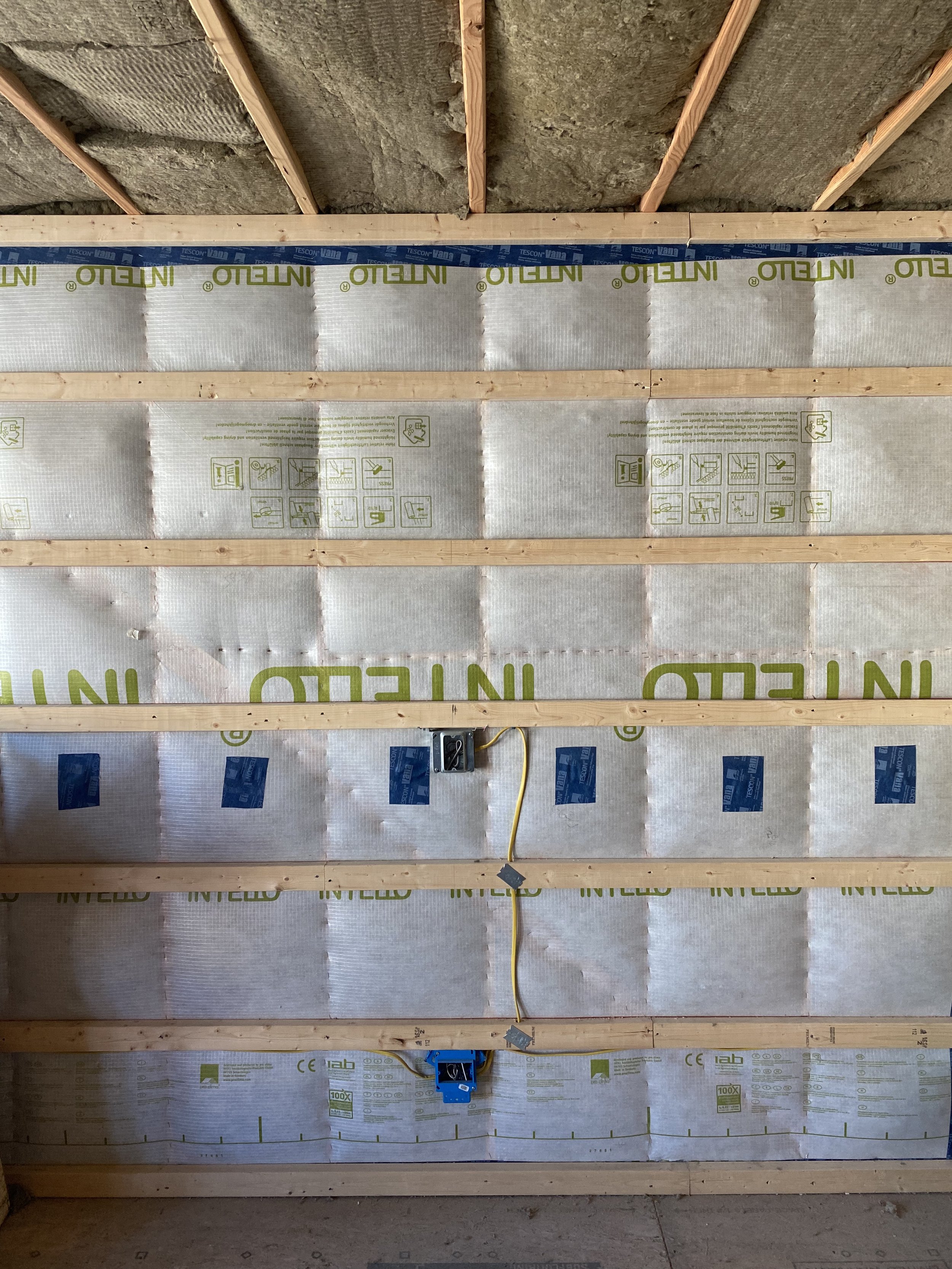 Photo from Unsplash
Photo from Unsplash
Originally Posted On: https://www.ardor.construction/energy-efficient-insulation-contractor-services/the-benefits-of-choosing-cellulose-insulation
What are the advantages of using cellulose insulation instead of spray foam?
Read this guide to learn about the material costs, benefits, and differences.
Are you building or upgrading your home and looking for environmentally friendly insulation material? Choosing the right insulation is an essential part of keeping your family safe and comfortable. It also helps to improve the energy efficiency of your house.
Did you know that cellulose insulation is a highly efficient, non-toxic insulation material made from 85% recycled newspaper? This is more than double the recycled content of any other type of insulation!
Cellulose insulation is regionally produced and supports local community recycling programs. This means that by using cellulose insulation you can significantly reduce the carbon footprint of your home.
With so much greenwashing happening in the construction industry, it’s important to understand why some products are superior to others. Read on as we look at what the advantages of using cellulose insulation are – for both your health and the environment.
How to Compare Different Types of Insulation?
Insulation provides a protective barrier that keeps your home warm in winter and cool in summer. To compare different types of insulation, you need to look at the amount of resistance to heat flow that each type provides.
This conductive resistance is usually measured for one inch of material and known as the R-value. Essentially this figure shows how effective the insulation is at slowing down the flow of heat. A higher R-value indicates a better quality of insulation than a lower R-value.
Cellulose insulation has an R-value of between 3.5 and 4 per inch of material. This variation is due to the different application methods. In contrast, closed-cell spray foam has an R-value of 6.5 to 7 per inch.
Thermal insulation is not the only factor to compare, it’s also important to consider acoustic insulation.
Blown in loose fill cellulose insulation Closed Cell Spray Foam Dense Pack Cellulose Rockwool Sound and Fire Barrier
What Is Acoustic Insulation?
Insulation does more than keep your home in a comfortable temperature band. It also reduces the amount of external and internal noise that passes through your walls.
This ability to reduce noise levels is the Sound Transmission Class (STC) of a material. The STC is a measurement of how many decibels are absorbed when the sound passes through the material. The higher the STC number, the better the quality of the sound insulation.
Closed-cell spray foam is a fairly dense material that is better at deflecting sound than absorbing it. The STC of closed-cell spray foam is around 39.
Cellulose insulation consists of loose fibers and is much better at absorbing sound. Depending on how densely it’s applied, it has an STC of between 44 and 68.
This means that cellulose insulation is great at soundproofing your home. By using cellulose insulation, you can make your house considerably quieter than by using closed-cell spray foam.
Acoustic Insulation Blown In Cellulose Cellulose enclosed in a Smart Air Barrier Loose Fill Cellulose
Toxic vs. Non-toxic Insulation Material
This may seem like an obvious decision for most homeowners. No one wants to live in a house insulated with toxic chemicals – right? Well, closed-cell spray foam is a highly toxic petroleum-based compound.
Spray foam companies have tried hard to convince homeowners that once the foam has cured it is totally safe. Unfortunately, the hazards associated with spray foam are more complicated than that.
It’s well established that closed-cell spray foam releases isocyanates. These irritants can cause asthma and other allergic reactions. That’s why it’s important not to enter a house for 24 hours after a spray foam application.
However, the risks to your family’s health may extend beyond this time. If the mixture of chemicals is not completely accurate there may be off-gassing for an extended time period. The EPA acknowledges that the off-gassing of these volatile chemicals is not yet fully understood.
In comparison, cellulose insulation is made out of recycled paper. This material is treated with chemicals to make it resistant to fire, mold growth, and insects. Don’t worry, the chemicals used to treat cellulose insulation are borate compounds and are completely non-toxic!
Closed-cell Spray Foam Insulation Cost vs. Cellulose Insulation Cost
Closed-cell spray foam insulation generally costs 50% – 70% more than cellulose insulation. This is due to the cost of the material as well as the specialized equipment needed to install spray foam.
Depending on the type of spray foam you use, the cost varies from $0.25 to $3 per board foot. Foam spray installers usually refer to a one-inch thickness of foam per board foot. Most walls are 3.5” thick, which means you need to multiply these numbers by 3.5.
Blown-in cellulose insulation generally costs between $1.0 and $2.80 per square foot. To understand how much more cost-effective cellulose insulation is, consider the cost of insulating the attic of a 1,500-square-foot house.
Closed-cell spray foam will cost between $5,000 and $10,000 to insulate this space. Cellulose insulation will cost between $2,500 and $5,000 to insulate the same area.
Does Insulation Provide an Air Seal?
Many spray foam companies claim that closed-cell spray foam provides a permanent air seal around your house. This may be true for a short while after installation, but it fails to take account of one vital piece of information.
That is the problem of foam shrinkage. As temperature and humidity levels change, closed-cell spray foam contracts and expands. This shrinkage is often excessive and can seriously reduce the effectiveness of your insulation.
The amount of shrinkage depends on the temperature variation in your area. It also depends on the temperature and humidity levels during the foam application. If you experience large fluctuations in temperature, there is a good chance your closed-cell spray foam may crack.
These gaps allow air to move through your insulation layer by convection. When this happens, the overall effect is significant heat loss during winter and the inability to keep heat out during summer. Totally the opposite of providing an air seal.
Cellulose insulation is not intended to act as an air seal. Instead, it reduces and slows the movement of air. When applied to an exterior wall, cellulose insulation is used in conjunction with an air sealing membrane. This material provides an air seal and holds the cellulose blown into the walls.
When dense-pack or sprayed cellulose is correctly applied throughout a house, it works as a highly effective air blocker. It provides an airtight layer that prevents heat loss through conduction and convection. The end result is long-lasting, energy-efficient, quiet, and safe.
Common Misconceptions About Cellulose Insulation
For many years the same myths have been circulating about cellulose insulation. Most of these are inaccurate, and some are completely untrue. Let’s look at some of the most common misconceptions about cellulose insulation.
Is Cellulose Insulation Highly Flammable?
This myth suggests that cellulose insulation is more flammable than other types of insulation. Even though it’s made from recycled paper, cellulose insulation has a Class 1 Fire Rating.
This is due to the borate treatment that cellulose insulation undergoes during manufacture. This drastically reduces the combustibility of the material as well as reduces the amount of smoke it produces.
Does Wet Spray Cellulose Insulation Grow Mold?
In some overhead and vertical applications of cellulose insulation, it’s necessary to add some water to the mix. This helps the insulation stick to the surface material.
This moisture evaporates soon after installation and is comparable to the moisture content of the timber frames. During manufacture, cellulose insulation is treated with boric acid, which prevents mold from growing on it.
How Much Does Cellulose Insulation Settle?
When properly applied by an insulation professional, there is minimal settling involved with cellulose insulation. Insulation companies follow a coverage chart to ensure they apply enough material.
By following these guidelines, your insulation will not settle below the r-value calculated at the time of application.
Environmental Benefits of Cellulose Insulation
The construction industry is responsible for a massive 37% of global C02 emissions. This includes the manufacture of building material, as well as the energy consumption of new and existing houses. One of the easiest ways to reduce the carbon footprint of your house is to use cellulose insulation.
Cellulose insulation is made with freely available recycled paper. It is also produced at regional centers with minimal processing. So the material and transport cost involved with producing it are much lower than closed-cell spray foam.
By using cellulose insulation, you can reduce the carbon footprint of end-of-life paper products. You can also turn your house into a carbon sink. This is possible as cellulose insulation traps more carbon through energy savings than it releases during production.
Another advantage is that by choosing cellulose insulation, you are reusing a huge amount of paper. That’s rather than it going into a landfill and decomposing, which releases methane. This gas has a warming potential that is 80 times more powerful than an equivalent amount of C02.
Are You Looking for Cellulose Insulation Services?
There are many benefits to choosing cellulose insulation over spray foam. It provides a highly effective, safe, and cost-effective way to securely insulate your home.
If you’re looking for a professional air sealing and insulation company, Ardor Construction has you covered! We specialize in using low-carbon materials to give your home high-quality thermal protection.
Our service area is typically a one hour radius from Kingston, NY. Contact us online, or call us at (845) 532-5117. So we can discuss your eco-conscious construction and remodeling goals!













